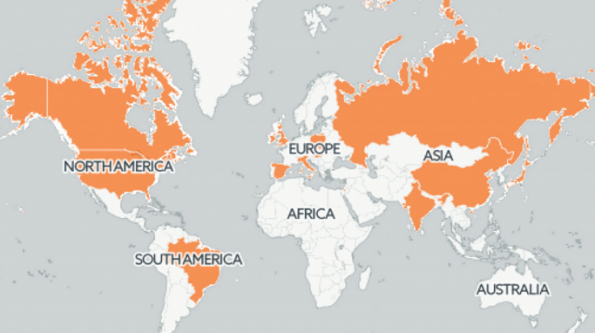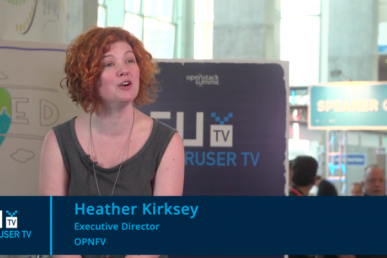OpenStack is a massive and growing open source community, with thousands of contributors from hundreds of organizations serving over 60,000 members. While it’s always exciting to see the numbers grow, what really makes OpenStack unique are the individuals themselves and the method by which we collaborate.
But before I get into how we collaborate, I wanted to touch on why we’re collaborating. We fight for the users, of course, who are tackling new markets like network functions virtualization (NFV), bio and physics research, financial services, and healthcare. They want to route your phone calls and power your web apps and deliver your packets on time. And they all want a seat at the table.
To power the next generation of these industries we’ve got to push the boundaries, making OpenStack the most versatile and reliable cloud platform on the planet. We need to support diverse networking models, for example, playing the role of integration engine to bridge the old and new. A vision this ambitious simply can’t be tackled by one company, country or person.
One such feature, longed for by the titans of telecom for the past few OpenStack releases, is called VLAN-aware VMs. This critical feature will allow companies to run their existing virtual network
functions (VNFs) in an OpenStack cloud and use per-tenant VLANs to get traffic to them.
Enter Newton
This feature is finally here in Newton. Many different aspects of OpenStack had to evolve to support this use case, from command line clients to agents, from the data model to the database layer, the community itself and, finally, with the Neutron server. In total, more than 50 people from 20 organizations in 15 countries wrote and reviewed the code that made this possible.
Let that sink in for a moment.
One feature. More than 50 people. 20 organizations. 15 countries.
Still not getting it? Here’s a map:

If you’re used to open source communities dominated by one vendor, this may come as a shock to you. We do things a little differently in OpenStack. No surprise announcements from the stage of a new feature that was secretly designed and developed by one company.
We do it in the open. Not just the source code, all of it.
While Isaac Newton is famous for his three laws of physics, we hope one day all open source follows our Four Opens, a.k.a. The four laws of open collaboration:
- Open source
- Open design
- Open development
- Open community
Open source gets the most buzz, but what makes OpenStack different is the open design, development and community. This is the how of OpenStack that really matters.
Open design means that everyone, including users who’ll ultimately operate the services in production, has a seat at the table from the start. Specs, like the VLAN-aware VMs feature, are documented and
discussed in the open, on the OpenStack website.
Open development means that every line of code is published and peer reviewed starting six months before the release.
Open community means that anyone can participate in the process, and the projects governance, as all technical leaders are elected under open and transparent processes.
But it’s not just about the process. It’s about the people.
Getting back to our example Newton feature, VLAN-aware VMs, let’s take a moment to recognize who actually did the work to bring this to life for the users we empower everyday.
It started with the spec process, which was led by Bence Romsics, software engineer at Ericsson and Russell Bryant, technical director of OpenStack at Red Hat with guidance from the project team lead (PTL), Armando Migliaccio. Armando then helped build a team of subject-matter experts:
- Kevin Benton was a jack-of-all-trades and touched nearly every aspect of the project.
- Jakub Libosvar worked on the OVS agent and tests.
- Rawlin Peters worked on the server and reviewed throughout.
- Abhishek Raut worked on the neutronclient/openstackclient.
- Rossella Sblendido worked on the OVS agent and reviewed throughout.
- Ryan Tidwell worked on the server and reviewed throughout.
Along with a strong group of contributors in other key areas:
- Carl Baldwin worked on the data model.
- Ilya Chukhnakov worked on the DB layer.
- Adolfo Duarte worked on the Neutron server.
- Brent Eagles worked on the data model.
- Hynek Mlnarik worked on the Neutron server.
- Babu Shanmugam worked on OVN mapping.
The result
In the end, what result did our commitment to the Four Opens produce? It gave us a feature that will one day power billions of cell phone calls all over the world, by enabling OpenStack to integrate with the
VLAN environments so prevalent in the $1 trillion dollar telecom industry today.
So when you make that cell phone call from Beijing to Barcelona, or Boston to Bangalore, please remember the Four Laws of Open Collaboration, and the engineers that made it happen from Brazil, Canada, China, Czech Republic, Hungary, India, Ireland, Israel, Italy, Japan, Poland, Russia, Spain, the United Kingdom and the United States.
Now, what should we build next?
This article first appeared in the print edition of Superuser magazine, distributed at the Barcelona Summit. If you’d like to contribute to the next one, get in touch: [email protected]
Cover Photo // CC BY NC
- Contributing to Open Infrastructure: Everybody Wins, So Let’s Get Started - August 3, 2020
- Come meet the users changing the world with OpenStack - October 30, 2017
- Collaboration and code beat hype and ego every time - September 12, 2017

)










